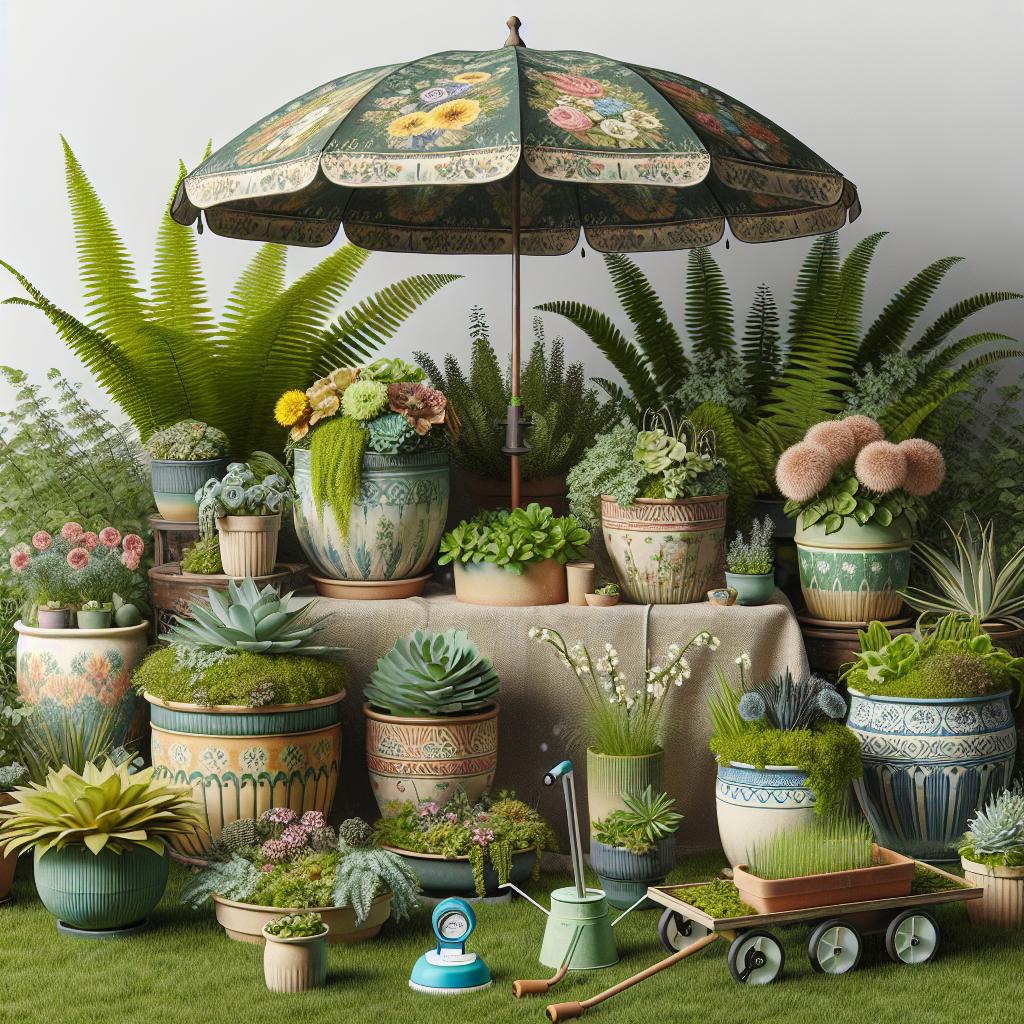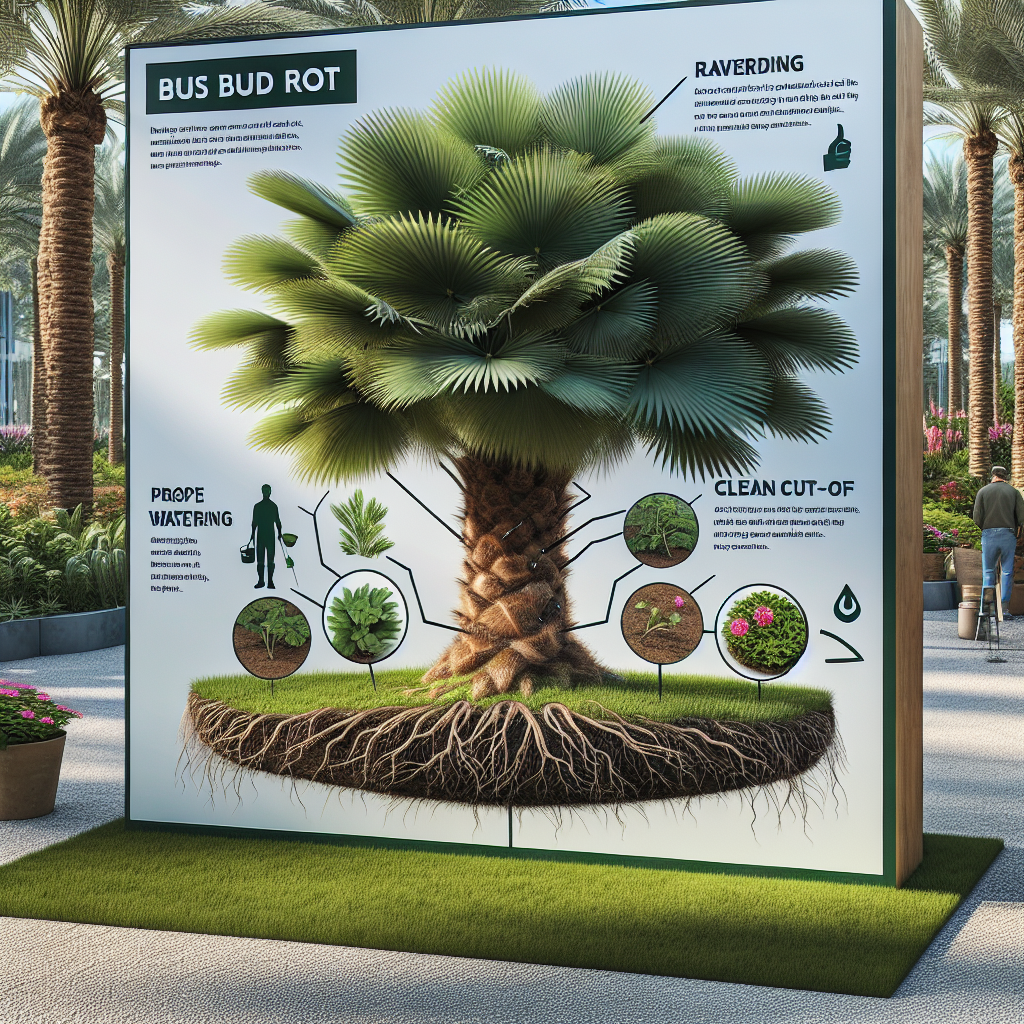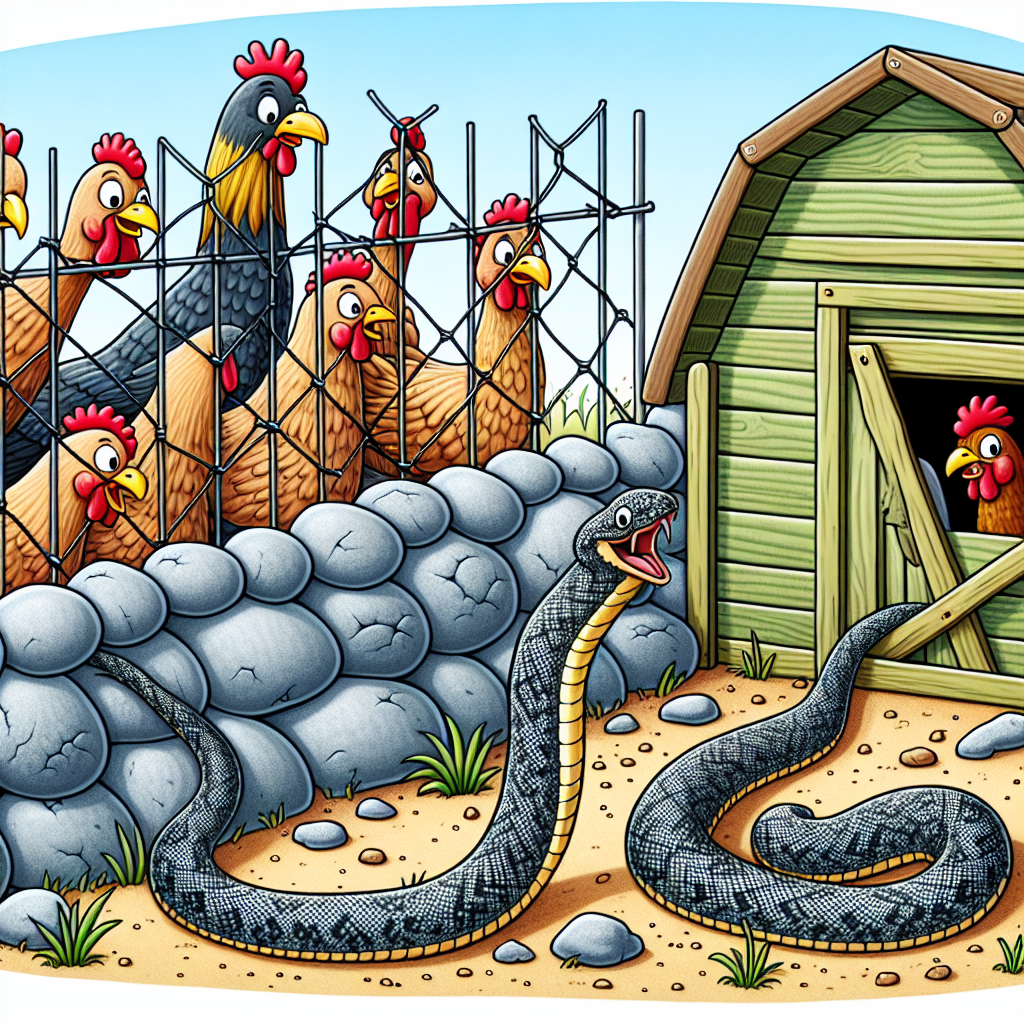Protecting Container Plants from Overheating
Published April 5, 2024 at 1:26 am
In this guide, we’ll explore effective strategies to shield your container plants from the harsh effects of heat, ensuring they remain healthy and vibrant even during the peak of summer.

Understanding Heat Stress in Container Plants
With the growing trend of container gardening, whether on urban balconies or suburban patios, it’s crucial to keep in mind that potted plants can suffer from heat stress during hot weather. Unlike plants in the ground, container plants have limited room for their roots to spread out and find water, which can be a significant drawback during heat waves.
When temperatures soar, container plants rely entirely on us for their survival. Being proactive and protective is key, to ensure our green friends don’t wilt under the sun’s intense rays. In this comprehensive guide, let’s dive into practical ways to shield your container plants from the risk of overheating.
Recognizing the Signs of Overheating
Before we can protect our plants, we need to know what trouble looks like. Overheating in plants often presents as wilted or brown leaves, dried out soil, and stunted growth. It could be one of the reasons why your otherwise healthy-looking snake plants begin to display droopy leaves, as discussed in this helpful guide on caring for snake plants.
Even robust plants like the cast iron plant, known for their tolerance to low light, can succumb to extreme heat. The leaves may appear bleached or develop brown edges, as detailed in how to grow cast iron plants in low light spaces.
Effective Ways to Prevent Overheating
Preventing overheating in potted plants isn’t just about watering more often. It’s about a series of well-thought-out steps such as choosing the right pot, the correct location, and even the soil composition, all of which can significantly alleviate the scorching stress your plants may be enduring.
For instance, the material of the container can dictate how quickly the soil heats up. Terracotta pots, while aesthetically pleasing, tend to absorb and radiate heat more than lighter-colored plastic or glazed ceramic pots. Picking the right pot is as critical as the plant itself, a factor not to overlook.
Shading and Sun Protection Tactics
Just like us, plants can benefit from a bit of shade. Employing garden structures such as pergolas, lattice, or even shade cloths can help filter the intensity of the sun. There are products like the Aluminet Shade Cloth that are designed to reflect sunlight while enabling air flow, mimicking a cloud’s natural screening effect. Reviews suggest that this highly reflective cloth not only guards against overheating but also diffuses the light in a way that promotes growth.
According to user experiences, installing the Aluminet Shade Cloth over your plant area can result in noticeably cooler temperatures. This has been particularly beneficial for sensitive plants that might struggle in the full force of the sun. If you’ve got a precious container garden, a shade cloth could be a worthy investment.
Find This and More on Amazon
If setting up a permanent shade structure isn’t possible, you could consider moving your plants to naturally shaded areas during the hottest parts of the day. Remember, certain plants, like the stealthy and resilient ZZ plant might tolerate low light conditions well, as highlighted in how to nurture Zamioculcas ZZ plant in dim environments, but even they need protection from excessive heat.
Ideal Watering Techniques for Hot Weather
Watering techniques adjust as the thermometer climbs. Early morning or late evening waterings can be most effective, as these times allow water to reach the roots without too much evaporation. But the frequency of watering during a heatwave might need to be higher, taking care not to waterlog the soil.
Consider using a soil moisture meter—a tool praised for its accuracy and ease. A quick search reveals tools such as the XLUX Soil Moisture Meter, which conveniently doesn’t require batteries and is said to provide instant readings of soil moisture levels, helping you avoid both underwatering and overwatering your heat-stressed plants.
Pros
- Instant readings help in accurate watering
- Easy to use with no batteries required
- Prevents overwatering and underwatering
Cons
- May not be as durable as other garden tools
- May require calibration over time to maintain accuracy
Find This and More on Amazon
When you’re battling the heat, it’s also a good moment to check in on soil composition—maintaining a balance between good drainage and water retention is key. Organic materials, such as coconut coir or peat moss, can improve both aeration and moisture retention, acting as a buffer for plant roots.
Essential Mulching Practices
Mulch is not just for aesthetics—it’s a frontline defense against soil overheating. A layer of mulch can substantially reduce water evaporation and soil temperature. Organic mulches like straw, grass clippings, or wood chips have the advantage of breaking down over time, enriching the soil as they decompose.
If you’re considering adding mulch to your container plants, be sure to leave some space around the stem to prevent rot. Also, replenishing the mulch layer periodically ensures that your plants continue to reap the temperature-regulating benefits.
Selecting the Right Containers and Placement
Container selection plays a pivotal role, with materials like glazed ceramic, plastic, and metal each having different thermal properties and impacts on the plant’s root zone. Light-colored containers naturally reflect more sunlight, reducing heat absorption.
The placement of your container plants can also influence their heat resilience. Elevating pots off the ground using pot feet or a plant stand improves air circulation, helping to cool the root zone. Products like the Groovebox Plant Stand are seen as fashionable and functional, with recommendations often pointing at their sturdiness and design that promotes airflow.
Find This and More on Amazon
In the battle against overheating, every small effort counts, from the way you harvest your vegetable garden to how you arrange your pots. Clever grouping can create a microclimate where plants help shade each other—just be sure to avoid overcrowding which can reduce airflow and increase humidity.
Optimizing Soil Composition for Heat Absorption
Soil composition is vital when it comes to managing heat. Generally, a well-draining mix can prevent water logging, while water-retentive components can help soil stay moist longer. Incorporating perlite or vermiculite can enhance drainage and prevent the soil from becoming too compacted and hot.
Using soil amendments like biochar can also be advantageous. Biochar’s porous nature helps retain water and nutrients, meaning it can act as a resilience booster for plants during times of high temperature. By ensuring the soil has the right mixture of drainage and water-retention properties, you can create a buffer that protects the plants’ root systems from becoming too hot.
Utilizing Self-Watering Planters for Consistent Moisture
Self-watering planters offer an innovative way to keep soil moist without constant vigilance. These planters have built-in reservoirs that provide a steady supply of water directly to the roots, important for plants’ survival during sweltering conditions.
Products like the Lechuza self-watering planter have received praise for their sub-irrigation system, which can keep soil adequately moist for weeks. Reviews often commend these planters for their convenience, especially for those who may not be able to water their plants daily, as well as their modern designs that suit any decor.
Choosing Plants with Heat Resistance
Some plants are naturally more resistant to heat than others and choosing these varieties can be a smart move. Plants like portulaca, lantana, and bougainvillea thrive in hot conditions and require less intervention to keep them healthy.
Portulaca, also known as moss rose, is a hardy plant that’s perfect for hot, sunny spots. With its succulent leaves and vibrant blooms, it can withstand dry spells and high temperatures with ease. These characteristics make it a superb choice for a low-maintenance container garden that’s expected to face heat stress.
Regular Monitoring and Adjusting Care
Regularly checking on your plants will allow you to make necessary adjustments before the heat does irreparable damage. Heat waves require increased vigilance and possibly a shift in care routine.
Container plants may be more susceptible to pests during stress from overheating, so keep an eye out for signs of infestation. If you notice your plants struggling, consider reviewing the guidance offered in successful winter vegetable gardening tips and techniques, which includes pest management strategies that can be applied year-round.
Creating a Watering Schedule
A structured watering schedule is crucial during hot weather. The aim is to provide plants with the moisture they need at the most opportune times for absorption, preferably when evaporation rates are low.
Creating a schedule that works for your plants involves understanding the needs of each species. While the watering needs of a moisture-loving Boston Fern, outlined in growing the Boston Fern for superior air purification indoors, differ significantly from those of a drought-tolerant succulent, both types may require more frequent watering to beat the heat.
The Role of Nutrients in Managing Heat Stress in Plants
When considering the health of your container plants, nutrients play a critical role, especially when they’re under heat stress. A balanced feeding regimen is paramount to strengthen plants against extreme temperatures.
Using slow-release fertilizers can work wonders by providing a consistent supply of essential nutrients over time. This method reduces the risk of nutrient runoff from frequent watering and ensures that the plants have everything they need to withstand hot weather.
Implementing Heat-Tolerant Companion Planting
Companion planting is an age-old technique that involves pairing plants together for mutual benefit. In the context of heat stress, certain companions can provide shade and humidity, creating a more favorable microclimate for container plants.
For example, planting taller heat-loving plants can offer shade to more delicate companions below. Similarly, ground-cover varieties can help reduce soil temperature and moisture loss for their taller neighbors. Understanding these relationships is key to a thriving container garden in the face of scorching temperatures.
Investing in Quality Gardening Tools
The right tools can make a significant difference in your ability to care for heat-stressed plants. A high-quality watering can with a long spout, for example, allows you to deliver water directly to the root zone where it’s needed most, minimizing waste and evaporation.
Brands like Haws offer watering cans that are renowned for their balance and precise water delivery. Their products often receive glowing reviews for durability and their ease of use, making them a favored choice among garden enthusiasts who need to carefully manage their plants’ water intake during heat waves.
Acclimating New Plants to Heat Conditions
Newly added container plants need time to acclimate to their environment, particularly when temperatures are high. Gradually transitioning plants from shaded to sunnier spots allows them to adjust without undergoing shock, which can weaken their defense against heat.
Acclimation is a step not to be skipped, ensuring your new green additions have the best chance at success. Whether it’s the hardy but elegant Dracaena or the bright and bountiful Bromeliad, each species detailed in guides like maintaining Dracaena and bromeliad care, has its own set of preferences that can help it thrive despite the heat.
Hydration Beyond Watering: Humidity and Misting
Creating an ideal microclimate for container plants sometimes involves increasing the humidity around them. This can be particularly helpful for tropical plants that suffer in dry, hot air.
A fine mist spray bottle or a hand-held mister can provide a soothing, humid environment, helping to cool leaves and stems directly. While these tools aren’t a substitute for proper watering, they can be an excellent complement to your plant care routine on sweltering days.
Monitoring Weather Forecasts for Proactive Plant Care
Part of protecting container plants from overheating involves staying updated with weather forecasts. Anticipating a heatwave allows you to take preventive actions, such as moving plants to cooler areas, shading them, or adjusting watering schedules ahead of time.
By remaining vigilant and informed about the weather, you can proactively manage your container garden, ensuring that your plants remain healthy and vibrant, even in challenging conditions.
Adapting Your Container Garden Over Time
Like any aspect of gardening, maintaining a container garden in hot weather is a process of learning and adapting. What works for one plant species or one climate may not work for another, and so experimentation and observation are key.
Taking notes on how your plants respond to different heat management strategies will help refine your approach. Over time, you’ll develop a better sense for the unique needs of your container garden and how to keep it thriving no matter the temperature outside.
Seeking Expert Advice and Community Tips
Don’t underestimate the power of community knowledge when it comes to protecting your plants from heat stress. Local gardening clubs, online forums, and nursery professionals can offer valuable advice tailored to your area’s climate and conditions.
Engaging with a community of fellow plant lovers provides a wealth of tried-and-tested tips, and it’s also a great way to discover new strategies for keeping your container garden thriving during the hottest days of the year.
Protecting Your Container Plants: A Holistic Approach
Defending your container plants from overheating is a comprehensive task requiring attention to various factors. From recognizing signs of heat stress to optimizing soil composition, from selecting heat-resistant plants to managing watering schedules, each action contributes to the well-being of your plants.
Incorporating protective measures such as mulching, using shade cloths, and choosing the right containers are all valuable tactics. Remember, even in the midst of a heatwave, with the proper know-how and a bit of love, your container plants can not only survive but flourish.
And as you adjust and hone your gardening skills, you’ll find that the lessons learned from coping with high temperatures will only serve to enrich your overall experience as a dedicated gardener. May your container plants thrive and bring beauty to your space, regardless of the weather!
Shop more on Amazon
Flowers & Plants Team
Flowers & Plants Team


